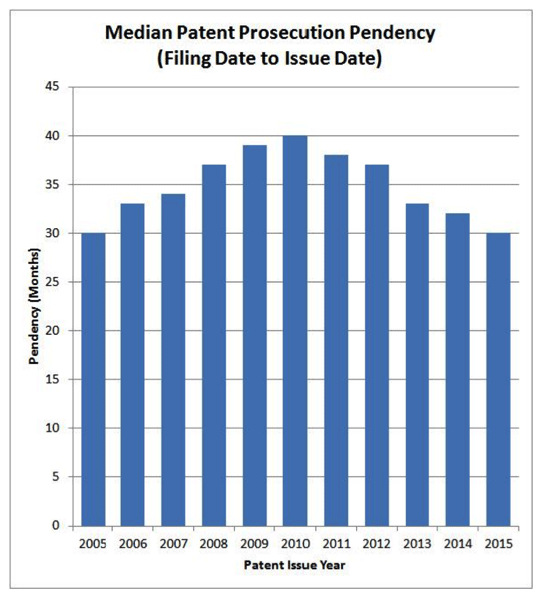The main requirements to practice patent law before the United States Patent and Trademark Office (USPTO), notwithstanding receiving proper on-the-job training, are: a) sufficient knowledge of relevant technology and science, and b) passing a registration-to-practice examination administered by the USPTO. Being a licensed attorney is neither necessary nor sufficient to practice. The USPTO maintains separate rolls of patent agents and patent attorneys. A person who holds a registration to practice and who is not an attorney is called a patent agent. A person who holds a registration to practice and who is also licensed by a state bar association to practice law is called a patent attorney.
Practice of patent law before the USPTO (e.g., client counseling, portfolio strategy development, patentability search and analysis, patent application preparation, and patent prosecution) is performed under the authority of the USPTO, where the two titles are equivalent. All Launchpad practitioners (attorneys and agents) offer representation exclusively within this scope. Practice of law outside the USPTO (e.g., licensing patents, performing freedom-to-operate opinions, and patent litigation in the courts) as well as practice of trademark law before the USPTO is performed under the authority of a state bar association and can be performed only by a licensed attorney.
NOTE: Launchpad Patents doesn’t have the capabilities to assist in defending patent in the future against infringement but we can refer our clients to a number of excellent patent litigators.
Launchpad asserts legal privilege over confidential communications with our clients within our scope of practice. Our assertion was recently validated in a precedential decision by the US. Court of Appeals for the Federal Circuit, In re: Queen’s University at Kingston, PARTEQ Research and Development Innovations.
A complete nonprovisional utility patent application should contain the elements listed below, arranged in the order shown. See Non-provisional (Utility) Patent Application Filing Guide.
- Utility patent application transmittal form or transmittal letter
- Appropriate fees
- Application data sheet (see 37 CFR § 1.76)
- Specification (with at least one claim)
- Drawings (when necessary)
- Executed oath or declaration
- Nucleotide and amino acid sequence listing (when necessary)
- Large tables or computer listings (when necessary)
On average, it takes about 2.5 years after filing a nonprovisional utility patent application in the United States. The chart below from Patently-O, a U.S. patent law blog, shows the median patent prosecution pendency over the past decade (2005–2015). The author defined pendency as the number of months from filing to issuance on a straight application-by-application basis. In this calculation, he did not consider priority, PCT, provisional, or RCE filings.

Historically, about 50 percent of filed U.S. patents are issued. More recently, USPTO allowance rates have increased to between 60 and 70 percent (http://patentlyo.com/patent/2012/12/patent-application-outcomes-rising-allowances-and-falling-abandonments.html). Launchpad practitioners have a significantly higher average than this USPTO normal range. We do not opine if your patent will attain commercial success. We make no representation about the patentability of specific inventions.
Yes. We can help you understand if your invention is generally patentable subject matter. We can help you understand the pros and cons of patent protection vs. alternatives such as holding your invention as a trade secret, filing a statutory invention disclosure, or disclosing your invention in a printed publication. For specific prior art we know about, we routinely draft claims designed to overcome the known prior art. However it is not possible, owing to the secrecy of recently filed patent applications, to know of absolutely all prior art. Thus no party other than a national patent office (during patent prosecution) can provide any absolute assurance of patentability.
Like any other law firm or agency, we perform a conflicts check to make sure we have not recently represented an adverse or competitive interest.
Launchpad has a large network of foreign associates and is able to provide filings virtually anywhere. As to where a given invention should be filed, the answer is fact based. We are experienced and comfortable reviewing your facts and advising you specifically, invention-by-invention.
The U.S. changed from a “First to Invent” to a “First to File” country on March 16, 2013. For this reason, obtaining an early filing date is typically a high priority. Launchpad provides streamlined filing to reduce your wait. A series of court rulings have affected what is considered “statutory subject matter” under 35 USC 101. Launchpad has developed approaches to file viable patents on most inventions to meet the requirements of 35 USC 101 (and foreign equivalents). For example, in the U.S., it is frequently productive to focus on user interface for a software invention. In contrast, in China, many software inventions should focus on “computer readable media.” In Europe, a medical treatment should focus on devices and reagents. Launchpad and its foreign associates are happy to provide counsel regarding patentability on a case-by-case basis.